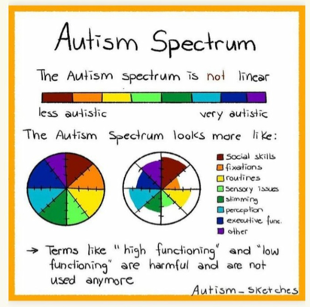How to stop worrying about the future?
What if I fail my exam? What if I don´t get a job? What if I get cancer? What if…? Worrying about the future is a common experience for many people. It can be difficult to let go of the unknown and the things that are out of our control. However, worrying about the future can lead to stress and anxious feelings, so why do we keep worrying about the future when it makes us feel bad?
As humans, we have an incredible capacity for thinking, analysing, and problem-solving. Our ability to anticipate future challenges helps us to prepare for the future by making sure that many of the uncomfortable things that potentially could happen in the end does not happen, as we thought about it, prepared for it, or was able to avoid it. This is a great thing, however, many of us have started to overdo it which is now making us feel very stressed and anxious.
Why do I overthink when it stresses me out?
There are many different reasons for why we might overthink, but something we see frequently in the clinic is that imagining things that may happen in the future gives us a false sensation of control and lowers the uncomfortable sensation of uncertainty that may come with not knowing what will happen. If we can think of everything that might happen, we may be more prepared to face the anticipated feared situation, and even lower the probability that what we are fearing will actually occur. However, in many cases, what we imagine might happen is never actually going to happen, and anticipating and imagining it makes us feel even more anxious.

So, how can I try to stop worrying about the future?
Focus on what you can control: Invest time and energy in what you can actually control. There are many things in life that are out of our control, but we can learn how to better control our reactions and responses. Instead of worrying about the unknown, focus on what you can control and take action when you can. For example, you cannot control whether you will pass an exam or get a job, but you can control whether you study (something that will increase the probability of passing the exam), or whether you send out job applications (which will increase the probability of getting a job).
Ask yourself three questions:
- Do I have any evidence that the thing I worry about will happen? This might be a tricky question to answer, as we are often very good at finding evidence where there are none. Do you find any evidence to the contrary? Has it happened before? Has it happened to other people? See if you can find any alternative statements that might seem more likely, for example “it is difficult to find a job, but I have gotten jobs before, it might just take a while”. If there is no evidence to our worry, then it is better for us to think about the more appropriate and likely alternatives or statements.
- In the case that you do find evidence supporting your worry, ask yourself whether it is actually important. Would the consequences be so terrible? Would it affect many areas of your life? Could things be ok even if the thing you worry about were to happen? Often, we give too much importance to things that in the end might not matter long-term, so it is important that we evaluate whether this will actually have a significant impact in our life, and if it does not, then it is not helpful for us to continue to think about it.
- If you can find both evidence and importance to your worries, ask yourself whether it is useful for you to keep worrying about it. Will it help you to solve your problems if you continue thinking about it? Will anything change? Will it lead to an action that changes the consequences? Does it make you feel good? If the answer is no, then it is better to think about the things you actually can do something about. If the answer is yes, great, let’s put action into motion, and only think about it when you are actually going to do something about it.
Seek help
It can be very difficult to stop worrying about the future. If you are struggling to stop and it is starting to affect different areas of your life and wellbeing, it can be helpful to seek the support of a mental health professional. They can help you develop coping skills and strategies to manage your worries and fears in a more helpful way, so that you only worry when it is useful for you.
About the author
Amalie Hylland is a health psychologist at Sinews. She specializes in behavior analysis and modification, working with adolescents and adults. She has experience working with a variety of issues, including anxiety management, phobias and ruminative thoughts, assertive and social skills development, self-esteem, procrastination, self-harm and obsessive compulsive behavior. Her orientation is behavioral therapy, integrating evidence-based techniques and tools to help change the thoughts, emotions and behaviors that cause us problems.
Sinews MTI
Psychology, Psychiatry and Speech Therapy
Why do I feel empty? 8 strategies for coping with the feeling of emptiness
We all experience feelings of emptiness from time to time. It is part of the secondary emotions being sadness the primary one. Other secondary emotions related to emptiness are: feeling abandoned, hopelessness, feeling depressed, loneliness, boredom, feeling ignored, feeling victimised, helplessness, defenceless, feeling apathetic, feeling vulnerable, indifferent and feeling melancholic.
There is an enormous amount of social pressure to having to fill the void and to be happy. The emptiness feeling is like any other unpleasant emotion, but there are some emotions that we tend to perceive as more unpleasant than others, and the feeling of emptiness is one of those unpleasant ones.
The truth is that feeling empty sometimes just indicates an unmet need that a person is experiencing, it frequently means being excited about something, experiencing a positive emotion, or having a concern about something that we don’t know how to name. The feeling of emptiness invites us to reconnect with our inner self and can help us identify what our unmet needs are.
The physical symptoms of the emptiness feeling usually include: A physical sensation in the pit of our stomach, a knot, or a feeling as if there is something to fill, a void inside of us (sometimes we eat, smoke, drink, seek physical contact and put other strategies in place to manage those physical sensations).

Where does the emptiness feeling come from?
The feeling of emptiness is a normal emotion and is part of the human repertoire and that we all experience every once in a while. It is sometimes related to different matters, such as low self-esteem, core beliefs (the ideas we have about ourselves, others, the world, etc.), loss of identity, having a diffuse identity, emotional dependency, experiencing a loss (something or someone), not having goals, not finding meaning, not finding a purpose or feeling that we are not doing something meaningful or we feel we are meaningless. Occasionally it can be related to personality disorders and/or depression.
Every time we have an emotion, it is an indicator of something. It is a message from our brain that there is an unmet need. For example, we may feel empty when we feel lonely, we have lost a relationship, a friend, a job, or our health in some way. We can then ask ourselves questions like: What are we loosing? To get to the root cause. Many patients ask themselves: Why doesn’t my uncomfortable emotion go away? Is it useful just to know where does it come from? Yes, because the main problem is wanting that unpleasant emotion to vanish. We are used to living without discomfort. Unpleasant emotions are very uncomfortable, but they always have some important message to give us. When that message is covered, or listened to, the emotions usually tend to dissipate. When those emotions arise, we can ask ourselves what we need without making any judgements.
Sometimes it is not enough to meet our needs or to deduce what we have lost. The feeling of emptiness occasionally activates something in our past, coping mechanisms that we used at some point in our lives to be able to survive.
When we name the emotion and its cause and detect which part comes from the current situation and which one comes from the past, it makes it easier for us to find a solution.
Let’s imagine a friend who all of a sudden starts to be cold and distant, and we don’t understand the reason. We analyse repeatedly what occurred and we can’t find a possible explanation. This can generate feelings of emptiness, guilt, anger…; but the emotion that emerges in that moment will depend on our previous experiences, together with the moment we are going through, the needs we have and our core values.

For example, when we have felt abandoned many times or as children, it will be easier for us to feel abandoned in this kind of situations. If justice (a value) is very important to us, we will be more likely to feel this as an injustice and feel angry about it. If we think we have done something wrong because we are often self-critical or concerned about what others think of us, we may feel guilty. If we don’t have anyone else right now, and they were the only person we talked to, we may feel empty or lonely. If it is a person with whom we shared a goal, we may also feel emptiness, loss of purpose or meaning in our lives.
How does this feeling affect our mental health?
No unpleasant emotion can affect our mental health, it is instead the ways we put in place to manage them or the unpleasant emotion’s intensity that play a role in our mental health. Emotions increase in intensity when we don’t give ourselves the time to be in touch with them, or when they are related to some thought pattern or emotional wound from our past. The most common thing we find in therapy is that people actually tend to tell themselves emotions shouldn’t be there, even when they think they are actually paying attention to them. The more we tell ourselves an emotion shouldn’t be there, or do things in order to fill the void or remove the emotion, the more intense it usually becomes.

Our brain is smarter than we think. The more we avoid something, the more we perceive it as dangerous and the scarier the situation will become next time. We tend to avoid what we find unpleasant. When we come into contact with an emotion that we have been avoiding for a long time, it will feel really intense and therefore we will avoid it even more.
How can these feelings affect interpersonal relationships?
Feeling empty might lead us to choose relationships that are not convenient for us to try to fill that void. For example, it is not the same to choose a relationship coming from a place of needing a partner than choosing it from a place of preferring a relationship, and this change between needing and preferring something can only be achieved when our personal needs are already covered.
When our start point is feeling empty, we may treat people differently. We may feel unlovable or not enough, and then we will act accordingly towards people around us. We then might leave relationships or get angry more often, or perceive things as a threat more regularly. We can even create a self-fulfilling prophecy by blaming ourselves for feeling empty: we feel empty, that leads us to react that way, then we receive consequences we don’t like, and we blame ourselves for starting from that point, which lowers our self-esteem, makes us feel empty, and then we start the cycle all over again.

What do we usually do when faced with such feelings, and how do we react to fill the void?
The main strategy all human beings normally use to deal with the feeling of emptiness is avoidance. Avoidance is a survival mechanism, and it is sometimes the only strategy we think we have that will work for us, because it actually reduces our distress in the short term. Avoidance consists on doing things so we can evade the unpleasantness of feeling empty. Some examples include: being endlessly busy, constantly seeing friends, using social networks regularly, trying to incessantly improve ourselves with self-help books, substance abuse, doing overtime at work, etc.
When we are in touch with our emotions it becomes easier to do something about them. Not having this emotional awareness can lead us to dedicate our effort to avoid these unpleasant emotions.
Sometimes in therapy we encounter people having trouble falling asleep at night. The reason for this is usually not giving ourselves enough space to process emotions during the day (analyse them, empathising with ourselves, look for solutions). As human beings we have emotions, and those emotions need to be processed sooner or later. When we don’t give ourselves the space to process our emotions our brain eventually processes them for us when we are not as busy (for example when we go to sleep). Procrastination is also linked to this phenomenon in which, when emotional needs have not been met, our brain tries to meet them at some other time (by postponing work). One thing is clear: the more we avoid the discomfort, the more intense it becomes.

What can we do when we have a feeling of emptiness? Strategies to follow
As acknowledged before, it is better when we don’t avoid our emotions. There are numerous social myths around the benefits of avoiding unpleasant emotions: we mistake having emotions with doing behaviours, we believe emotions will become unmanageable if we don’t avoid them and then we will become dysfunctional, or we tell ourselves these emotions are “silly” and therefore should not be there, or we think we already know what the problem is and it is not necessary to validate our experience.
Just imagine for a moment we have a healthy horse, eager to run and learn and in need of daily exercise. Now let’s visualize we lock our horse in a small stable for 2 months. How would the horse feel when he goes out for the first time? The first time we take that horse out he’ll gallop crazily, and he might even break a leg and would be impossible to ride on. It will definitely seem scary but that doesn’t mean we have to lock him away again for a longer period of time. This is what we tend to do with our emotions when they seem too scary. The ideal strategy to follow should be the same as the method we would do with our horse, to take them out every day until they become more bearable. We usually don’t allow ourselves to be in touch with our emotions because they seem too intense and scary, but the reason for this is not giving ourselves the space and time to process them. Some people believe they are too emotional and the main reason for being “too emotional” is not being in touch with our emotions enough. Emotions pile up the more we supress or avoid them.

Steps for handling unpleasant emotions and the emptiness feeling:
- Finding our emotions. To be able to observe and pay attention to them. What are you thinking about? What are you feeling? How does your body react? Do you have any physical sensations? Investigate the emptiness feelings´ possible cause. Does it remind you of something from your past?
- Experiencing the emotions as waves that come and go. To not try to block, suppress, push away or get rid of the emotions we are experiencing. To prove to ourselves that we can tolerate unpleasant emotions. This moment will pass if we allow ourselves to experience them long enough.
- Remembering we are not what we feel. To make peace with that specific emotion. To be able to accept it without judgement and without making it a part of our identity. It's just something we are feeling, it doesn't define us, and it is definitely not saying anything about us.
- Labelling. Naming it. Defining it. What does it mean? Can we describe it? How would we call it?
- Acceptance. Why is it normal to have that emotion? What would we tell a friend if they felt that way? Why do we have the right to feel that way? Keeping in mind an emotion is not and will never be a behaviour. They are two different things. Any emotion is valid, what we can sometimes work on are our behaviours. Emotions are just a result of physiological reactions to internal or external stimuli. We cannot force ourselves to not feel a certain way. We can only change the behaviours resulting from our emotions. We can also work on the association between situations and emotions in the long term.
- Emotional analysis. We can analyse which aspects of the situation have made us feel that way, and also understand the connection with our past and our way of understanding the world. It can also help us to analyse the emotion’s message (its function) and detect when it is a false alarm (something we learnt to survive in the past and that is no longer useful, because now the danger has passed).
- Using our strategies to support that emotion. Some examples of strategies to take care of our emotions are the following:
- Problem-solving techniques. To look for a solution to those emotions by asking ourselves what can we do (and is under our control) to cover the emotion´s needs.
- Emotional regulation techniques and distress tolerance skills.
- Mindfulness and meditation.
- Working with our core beliefs and with the cause that originated those beliefs about ourselves.
- Using self-compassion and self-care techniques. To see if we are being too hard on ourselves and to work on reducing our self-criticism.
- Seeking social connection, pleasurable activities and dopamine sources. To meet our basic needs such as hygiene, sleep and food.
- Time out. To spend time each day processing our emotions and accepting them as they are without making any judgement.
- To spend time with ourselves. It can help us find our identity, purpose, things we identify with and activities related to them.
- Defusion exercises. When everything becomes too overwhelming, we can practice disidentifying from those emotions with some practice.
8. Writing down our thoughts. When do we feel empty the most? Is it a very intense discomfort that lasts for a long time or can it be pinpointed to a specific situation? What does it inform us about? What happens right before we feel it? What do we usually think about when we are experiencing it?
Sometimes it becomes a real challenge for us to take a moment and see what we need when we are experiencing intense uncomfortable emotions or spirals of negative thoughts. What I always recommend in these cases is to rate our emotions from 0 to 10. When the emotional intensity is below 5, then we can stop, take a break and analyse what is happening to us and what we are feeling and needing. When we are running in front of a lion (and this is exactly how we feel when faced with an unpleasant emotion) it is really difficult to stop and ask ourselves the reasons why we went to that place, why are we not running fast enough, and whether or not the lion’s fur is beautiful. When the discomfort is over 5 out of 10, we can only devote ourselves to manage it in the best way possible by taking a cold shower, breathing techniques, cuddling a pillow, talking to a friend, doing an activity that calms us down, doing exercise, etc.

The feeling of emptiness is a basic human emotion that we all experience from time to time. When emotions feel too intense, unbearable or unmanageable or that last too long then we can put the above mentioned strategies in place. We can also work on raising our self-awareness about the times we try to avoid our discomfort and work on regulating those emotions in a different way.
Therapy can help when, after some time practicing these strategies you still feel that the feeling of emptiness is too intense and difficult for you to thrive. An experienced psychologist can also help you to explore other possible causes that might make you feel this way. They can also provide you with tools for emotional regulation and introspection in order to get to know what your needs are, be more in touch with yourself, your values and interests. Therapy can also help you understand if there are any wounds from your past or core beliefs that are getting triggered and affecting you in the present.
When we reconnect with our inner self, our self-esteem increases, unpleasant emotions become less intense, and it helps us to be able to communicate from the awareness of knowing what is happening to us and what we need and therefore act accordingly.
About the author
Marta Gray is a licenced Psychologist working at Sinews. She has a flexible approach combining different scientifically proven methods (Acceptance and commitment Therapy, CBT, EMDR) depending on the patient’s needs. Her main field of expertise is working with adults and she is specially interested in complex trauma, anxiety disorders, emotional deregulation and couple’s therapy.
Sinews MTI
Psychology, Psychiatry and Speech Therapy
Common English Pronunciation Mistakes in Spanish Speakers
As someone who has been teaching English to native Spanish speakers for several years now, my ear has been particularly exposed to the influence Spanish pronunciation can sometimes have on English pronunciation. I have been able to pick up on some of the sounds I often hear my students mistaking. It’s normal, English can be confusing. There’s a lot of rules, and so many exceptions, it can be a bit overwhelming when trying to learn it. There are some key differences between English and Spanish that make it even trickier. Spanish is a phonetic language, so oftentimes what you see on paper is exactly what you’ll hear being said. Unfortunately, English doesn’t work that way, most of the time the spelling and pronunciation don’t match. So naturally, Spanish speakers use their own words and phonetic rules as a crutch, and often times end up pronouncing the English word as if it were a Spanish word.
Accents and Pronunciation
Accents can be charming, it says a bit about someone’s story, it can tell you where a person is from and where they have been. You hear these things in someone’s voice and the way they piece words together. Although, certain pronunciation mistakes can change the meaning that the messenger is trying to convey, that can sometimes get someone into trouble. If you’re someone communicating in a language that isn’t your native or dominant tongue, your goal is to be an effective communicator in that language. It’s difficult when you’re making mistakes that don’t allow you to get your point across.
Why are accents difficult?
It’s normal to make pronounciation mistakes when speaking a language other than your native one, you’re making sounds you don’t normally make and sometimes having to change the structure of the way you would normally say things. Each language has it’s own set of rules and it’s rhythm, so depending on the similarities of two languages will determine the level of difficulty for pronunciation. When learning a language at school, pronunciation is often not properly taught. A lot of time is dedicated to vocabulary and grammar, and pronunciation often gets very little attention. Exposure to the verbal language is very important, you have to be able to listen and identify the sounds of a language before you can produce them. Pronunciation is a skill, it’s not knowledge, you have to practice a lot before you can actually master it.

How can working on my accent be beneficial?
Working on your accent does not only help you be better understood, it also helps you better understand. Sometimes you don’t realize you are making certain pronunciation mistakes, and that’s probably because you can’t identify those difficult sounds when you are being spoken to.
Working on your accent can help:
- You sound clearer.
- Increase understating.
- Make you sound more natural.
- Make you sound more intelligible.
- Make you feel more confident.
What are some difficult sounds for Spanish speakers?
Consonants:
Consonant clusters are commonly seen in English. It is a group of consonant sounds with no vowel sounds between them. For example, like in the words splash, spoon, breakfast and worked. Depending on the placement of the consonant cluster and the combination of consonants can make pronouncing consonant clusters tricky for Spanish speakers.
- Several words begin with the s sound in Spanish, such as in solo, sala, sentir, but when the s sound is followed by a consonant such as in Spain, school and stay they might often add a vowel sound at the beginning and are pronounced as espain, eschool, and estay.
- Consonant clusters are sometimes seen at the beginning and the middle of a word such as in fresa, espuma, and hombre, but not at the end. Therefore, when consonant clusters are seen at the end of the word in English, such as in must, wind, and help, they might often cut off one of the final sounds and pronounce it as mus, win and hel.
Substituting the z sound for the s sound
This goes back to when I mentioned Spanish is a phonetic language. There are many words in English that are spelled using the letter s but end up making the z sound such as cousin, has, and season. These words should be pronounced like cuzin, haz, and seazon, but since there is no z sound in Spanish, Spanish speakers end up pronouncing the words as they are written.

Substituting the v sound for the b sound
English makes a clear distinction in the way v and the b sounds are pronounced. You can hear this in words such as very and berry, and in vote and boat. In Spanish the v and b sound exactly the same, like in basta and vasta and in haber and a ver, the spelling is different but the pronunciation is the same. Spanish speakers tend to follow this same phonetic rule when they are speaking English.
The H sound
The letter h at the beginning of a word is silent in Spanish, for example in the words hora, huevos, and hermana. You can not hear it at all, so words in English that start with an h like in house are often pronounced with a j like in julio. Words like happy, hello and how, are often pronounced like jappy, jello, jow.
The th sound
In English the th can be pronounced in two ways like in than (voiced) and in think (voiceless). The voiceless th can be heard in some parts of Spain, but you won’t hear this sound in all Spanish speaking countries.
- The voiced th like in words than, they and these will adopt the d, and sound like dan, day, and dis.
- The voiceless th like in words think, thunder and thorn will adopt the t, and sound like tink, tunder, and torn.
Vowels
There is the same amount of vowel letters in English and in Spanish, but there are a lot more vowel sounds in English than there are in Spanish. English and Spanish do not share any vowel sounds, which explains why a lot of Spanish speakers have a difficult time hearing and pronouncing the difference in some words, for example like in sheep and ship. Spanish doesn’t distinguish the vowels through length, they are all short. You can hear this in words like peso and piso, and in hambre and hombre, the vowel sound changes but the length stays the same. In English you have some short vowel sounds and some long ones, you can hear the differences in the words hide (long), and hid (short) and in pool (long), and pull (short) the vowel sound and the length both changes.

These are a few of the most common pronunciation mistakes I often hear in Spanish speakers. That’s not to say that these are difficult sounds for everyone. It’s important to remember that having an accent is not a bad thing, but you might also want to work on you pronunciation to help you become a more effective communicator, and feel more confident when speaking. Pronunciation takes a lot of practice and exposure, and can be difficult when working on it alone. With lots of dedication and training you can change the way you sound and improve your intelligibility.
About the author
Jarrisvette, is from South, Texas in the United States. She worked as a Speech language Pathologist Assistant in Brownsville, Texas and then moved to Spain to pursue a Masters in Bilingual and Multicultural Education at la Universidad de Alcala in Alcala de Henares. She has been living in Spain for 4 years and working as an English Language assistant with a variety of ages within the school system. She is currently working as a Speech therapist at Sinews and is excited to be a part of the team.
Sinews MTI
Psychology, Psychiatry and Speech Therapy
Could my child be developing an eating disorder?
In Spain, around 300,000 adolescents and young adults between the ages of 12 and 24 suffer from some type of eating disorder, according to data from the Spanish Association for the Study of Eating Disorders (AEETCA).
Eating Disorders or EDs are psychological disorders related to alterations in food intake, body image and weight that can affect the physical, psychological, social, and academic/professional spheres of the person who suffers from them.
EDs are complex disorders, so there is no single factor that causes their onset, but rather they are multifactorial in origin, where a variety of genetic, personal and social factors play a role.

The most common eating disorders in adolescents are anorexia, bulimia and binge eating disorder. Anorexia is characterized by a restriction of food intake resulting in considerable weight loss. Bulimia is characterized by a restriction of food intake, with episodes of consuming a large amount of food in a short time, followed by self-induced vomiting. Binge eating disorder is characterized by eating a very large amount of food in a short time with a feeling of loss of control, without subsequently employing methods to compensate for what has been eaten, and is therefore frequently associated with weight gain.
Although eating disorders can appear at any age, adolescence is a period of special vulnerability due to the large number of physical, mental and social changes, so EDs have a higher incidence at this stage of life, especially between 12 and 18 years of age.
Below are some warning signs that can help you identify if your child is suffering from an eating disorder.
Food-related warning signs
- Avoiding family meals.
- Skipping meals or eating small portions.
- Fasting (not eating for a period of time).
- Eating large amounts of food in a short period of time.
- Excessive interest in counting calories, diets, fat grams, and food composition.
- Creating "eating rituals" (e.g., chewing each bite a certain number of times, breaking food into very small pieces, eating very slowly).
- Eliminating entire food groups (e.g., carbohydrates, sweets or fats).
- Disappearance of food at home.
- Control and supervision of food preparation at home.
Warning signs related to weight and physical appearance
- Unjustified weight loss.
- Rapid weight gain.
- Worry or fear of gaining weight.
- Guilt about their weight or after eating.
- Feeling overweight, despite having a normal weight.
- Avoiding going to the beach or swimming pool.
- Hiding your body with oversized or baggy clothing.
Warning signs related to behaviors
- Exercising excessively.
- Feeling intense discomfort if he/she cannot exercise.
- Keeping an accurate record of body weight and calories consumed.
- Going to the bathroom immediately after meals.
- Depressed mood.
- Irritability.
- Social isolation.
- Difficulty concentrating.
- Perfectionism.

When to see a specialist
If your child presents any of these symptoms it is important to go to a mental health professional as soon as possible, since an early diagnosis and treatment increases the probabilities of success of the treatment. Your child may only present one of the indicators, but when in doubt it is best to see a specialist to rule out or confirm the presence of an eating disorder.
What the specialist's diagnostic process is like
The evaluation process for an eating disorder includes an initial interview with the patient, as well as with the patient’s parents in the case of children and adolescents. In this interview a detailed clinical history is done to learn about the patient’s developmental history, current symptoms related to eating behavior, the presence of other possible symptoms related to mood and personality as well as the family´s medical and psychiatric background.
Specific psychological tests for eating disorders that evaluate body image, eating behavior and eating habits are also usually performed. It is also important to conduct a physical examination to know the height, weight, body mass index and other medical parameters of the person.

How to talk to my child if I identify any of the warning signs of an eating disorder?
It is important to understand that children and adolescents with an eating disorder have little awareness of the problem and even if they do, they are usually ashamed of it and try to hide or deny it. Here are some tips for addressing the issue with them:
- Find a quiet time and place to have a conversation in a relaxed setting. It can be on a walk alone with your child or during a quiet time on the weekend. Avoid mealtimes or times when other family members are present.
- Express your concerns about changes you have observed in their eating behavior or mood, trying to be as objective and fact based as possible. Focus on expressing your concern for how they feel and their health, and avoid comments related to their weight or appearance.
- Provide accurate and understandable information about eating disorders, their treatment and the importance of getting professional help. You can explain that the psychologist's role is to help them understand what is going on and to help them feel better about themselves, and that what they tell the psychologist is confidential.
- Offer them a safe space to express their concerns, thoughts, emotions, and questions without interruption or judgment. As you listen, ask what you can do to support them and what they need.
- Practice patience and compassion: your child may have initial fear or resistance to seeing a specialist so it is important to be patient during this process as well as consistent. If he/she initially refuses help, do not insist at that time. Allow some time to go by talk to bring it up again and let him or her know that he or she can come to you with any questions or concerns that arise.
Eating disorders are one of the most common psychological disorders in children and adolescents. If your child develops an eating disorder it is important not to blame yourself or feel ashamed, as they are complex mental disorders that arise from a variety of factors.
If you identify one or more of the indicators of eating disorders in your child it is important to see a specialist as soon as possible because early intervention increases the chances of successful treatment. The family plays a key role in both the initial detection of warning signs as well as during the recovery process. Fortunately, eating disorders have a solution. With proper professional guidance and your love, support and patience, your child can overcome an eating disorder.
About the author
Verónica Sarria is a health psychologist at Sinews. She is specialized in eating disorders and obesity, working with adolescents and adults. She also treats other problems such as anxiety, depression, grief, self-esteem and interpersonal relationship problems, among others. Her orientation is cognitive behavioral but she integrates tools and techniques from other currents according to the needs of each patient, thanks to her training in mindfulness, mindful eating, attachment theory and systemic (family) therapy.
Sinews MTI
Psychology, Psychiatry and Speech Therapy
What is Minority Stress and how does it affect LGBTQ+ people?"
To combat inequalities, it is essential to build scientific approaches with minorities in mind. Thus, beyond the existence of laws that look after the interests of disadvantaged communities, researchers and health professionals must be aware of the impact their work has on such communities and use that knowledge to promote equality. While there are different views on how to support unequal groups – for example, London (2008) argues for the importance of giving a voice to those we want to help in order to avoid paternalism – I believe that, whatever perspective we adopt, it is essential to know the reality of the groups whose rights we want to preserve. Therefore, I will elaborate here on the conditions of sexual minorities and how they affect their psychological wellbeing.
Discrimination, stress and psychological health
Sadly, the unfavorable social environment that sexual minorities experience in around the world can be an important source of stress. In Spain, the latest report carried out by the Ministerio de interior (Department of Internal Affairs) on hate crimes reflects that 530 hate crimes motivated by homophobia and transphobia were registered in 2021. Assault and hate speech incidents motivated by the victim’s sexual orientation or gender identity have been on the rise in recent years and make up 25.86% of all hate crimes recorded in Spain in 2021.

Moreover, although an adverse social environment leads to increased stress for everyone (Dohrenwend, 2000), there are key components that differenciate the stress that minorities suffer due to the discrimination they face. Thus, and with the aim of diferenciate the kind of stress that only minorities face (whether racial, sexual or otherwise) and based on several works in social psychology and sociology, Psychiatrist Ilan Meyer (1995, 2003) developed the Minority Stress Model, which explains that minorities are exposed to certain aditional stressors (minority stressors) that the rest of the population does not face.
For Meyer (2003), minority stress is characterized by the following characteristics:
- Unique: it is different from other stressors to which non-stigmatized people are exposed.
- Social: it originates in social structures, processes and institutions over which the affected individual has no control.
- Chronic: it is linked to relatively stable social structures over time.
The minority stressors that Meyer (1995, 2003) considers specific to sexual minorities are: internalized homophobia, experiences of discrimination or violence, perceived stigma and concealment of sexual orientation.
Perceived stigma consists of expectations of rejection and discrimination, which facilitate the emergence of feelings of alienation and fear, as well as heightened vigilance of both the environment and one’s own behavior, which requires a great deal of energy (Allport, 1954; Cohen et al., 1986). Thus, sexual minorities face both acute stressors (experiences of violence) and other stressors of a more subtle nature (perceived stigma).
There is a robust causal association between the presence of stress and the occurrence of Major Depression episodes, supported by a large body of research on the effect on health of both stressful life events (Hammen, 2005) and stressors (Mazure, 1998); Mazure, 1998) as well as continuous and repetitive stressors, which can have a cumulative effect (Juster, McEwen & Lupien, 2010) that can become as harmful as the stress peaks produced by particularly stressful life events (Rojo-Moreno, Livianos-Aldana, Cervera-Martinez, Dominguez-Carabantes & Reig-Cebrian, 2002).

To explain the long-term consequences of discrimination, Pearlin and colleagues (1997, 2005) coined the concept of «stress proliferation», which refers to a causal chain of stressors. This model assumes that after the direct effects of a stressor may have disappeared, the mere exposure to that stressor may have favored the appearance of new ones that do not go away at the same time as the initial stressor. Along the same lines, Hatzenbuehler (2009) states that the higher levels of stress to which sexual minorities are exposed favor the appearance of interpersonal problems, emotional dysregulation and dysfunctional cognitive processes. In turn, these problems and processes mediate the relationship between minority stress and the emergence of psychopathology. Thus, exposure to discrimination-related stressors not only favors the emergence of new stressors, but may affect the way in which the individual copes with new ones.
Minority Coping
Authors such as Savin-Williams (2008) have criticized that the Minority Stress Model has led some researchers to focus excessively on the discrimination suffered by stigmatized groups and to ignore the coping mechanisms and social support available to minorities. Although people with a non-normative sexual orientation experience higher levels of stress and this may translate into a significant increase in psychological distress, we need to pay attention to the protective factors that might atenuate the effects of minority stress, such as a strong group identity (Schmitt, Branscombe, Postmes & Garcia, 2014), minority coping, or even that in those exposed to relatively low levels of minority stress continued exposure to stress reduces the likelihood that a traumatic event will trigger major depression (Cairney, Boyle, Offord & Racine 2003). In addition, identifying as part of a minority may influence the effect of new stressors depending on the relationship the person has with that part of his or her idendity and the level of integration this identity has with the person’s other identities (Thoits, 2013).
Among the factors previously mentioned, Jones (1984) studied «minority coping,» which is the ability of minorities to create empowering structures that help combat the stigma they suffer. The resources that a minority has for coping with discrimination can be classified into individual and group resources, although the difference between the two is not clearly delineated. Individual resources are, for example, those that depend on an individual’s personality, and group resources are those that act at the societal level.
Affiliation among people within a minority group:

- Enables access to social environments without prejudice against them for belonging to this minority, resulting in lowered expossure to stressors compared to other contexts.
- Access to stronger social support when faced with prejudice.
- Allows individuals with a strong group identity to self-evaluate by comparing themselves with people from their own group instead of people from the dominant culture (Pettigrew, 1967).
- Can facilitate the reappraisal of a stressful situation, reducing its harmful effect on the individual's psychological well-being because the group tends to validate the experiences and feelings of their members. In fact, this reappraisal is the cornerstone of psychological therapies that seek to empower those who belong to discriminated groups.
About the author
Jorge Jiménez Castillo is a psychologist at SINEWS, where he practices in English and Spanish. He works daily with local and international populations and has a long history of studying the reality of the LGTBIQ+ community in and out of the clinic. He works from a cognitive-behavioral approach with evidence-based interventions and believes that in order to provide quality psychological care one must be aware of the inequalities that intersect with users and explore how they intersect with each other.
Sinews MTI
Psychology, Psychiatry and Speech Therapy
Is your child ready to speak?
Jarrisvette Villarreal, is from South, Texas in the United States. She worked as a Speech language Pathologist Assistant in Brownsville, Texas and then moved to Spain to pursue a Masters in Bilingual and Multicultural Education at la Universidad de Alcala in Alcala de Henares. She has been living in Span for 4 years and working as an English Language assistant with a variety of ages within the school system. She is currently working as a Speech therapist at Sinews and is excited to be a part of the team.
Do you notice that your little one is not yet speaking? Are you asking yourself why? Have you done a lot of research on how to promote talking, but can’t quite make it happen? Maybe we should take a step back, and ask ourselves if they are ready to talk? Have they acquired the pre-language skills that set the foundation for words?
As babies grow, their abilities change. Babies are like sponges; they absorb so much during their first years of life. They go from newborns who mostly sleep to walking, talking toddlers. This doesn’t happen overnight; there is a lot that happens in between these two phases, called “baby steps.” Little by little, they are going through minor changes every day and learning how to become these walking, talking toddlers. We always celebrate the big changes, like them producing their first word or taking their first steps. It’s incredible to witness the little ones learning and growing, but it’s easy to overlook the minor changes. These minor changes are what lead to their walking and talking, they are the skills that build the foundation for words and steps to happen.
We know that each baby is different and develops at their own pace, so maybe not every single one of them will hit that milestone mark at the, “said age.” However, there are still certain skills that a baby should acquire before they reach that milestone. Some children might need some extra help and guidance to gain these skills.

Pre-language skills
Pre-language skills are prerequisites for speech and language. They are a set of skills that should develop alongside one another in both normal developing children and children with language disorders. These skills might not show up in the same order in every toddler, but they will show up before language emerges. These skills are what children use to communicate before they are able to form words. Pre-language skills must be consistently present, and stable in order for the child to be ready to talk.
How will I know if my child is ready to talk?
Lucky for us, Laura Mize, Speech Language Pathologist, has an awesome detailed podcast series that thoroughly describes pre-language skills. She talks about “11 skills a toddler must use before words emerge.” She helps us understand what they are, how to identify them and why they are important.
The pre-language skills mentioned in her podcast are:
- Responds to events in the environment: do they notice things around them? Children must be able to process things they hear and see. They must be aware of their surroundings, and react to it.
- Responds to people: are they interested in people? Children should interact with people. They’ll respond when you call them by name, or look for you, so you can play with them.
- Develops an attention span: attention spans in toddlers are typically 3-6 minutes long. They can notice something and are interested in it. They stay with it for a while and give themselves the chance to see how it works.
- Exhibits joint attention: they can share the moment. They can use a toy with you, and shift their attention from the toy to you.
- Plays with toys: toddlers learn through play and using toys. Toys are meaningful to them. Do they know how to appropriately play with the toys? For example: rolling a toy car on the ground.

- Understands and uses early gestures: Do they communicate with their bodies? Can they wave bye-bye, nod yes or no, follow a point?
- Understands early words and follows simple directions: Do they recognize names of familiar people or things they use every day? If you say “Where’s dad?” or “Do you want water?” they will understand.
- Vocalizes: Are they noisy? Toddlers should make intentional and purposeful sounds with their voice, before they can even speak.
- Imitate actions, gestures, and words: They copy what you are doing. They use a toy the same way you use it, they clap when you clap.
- Initiates interaction: They take the lead to try and get your attention. They want to play with you, they try to get you to look at them or grab something for them.
- Turn taking: They are able to play back and forth. They can roll a ball or a car back and forth.
These are the 11 skills a toddler must develop before they start talking. Each one of these skills are essential to language development. Toddlers must have these skills firmly established in order for words to flow.
You can listen to the first part of the podcast clicking here and to the second one clicking here.
How can I help prepare my child for words?
As a parent you know your child best. You know what they are able to do and what they are not. You must be able to identify if these skills are present, consistent and strong in order for language to emerge. If one of these skills is missing, or isn’t strong, those are the skills you need to target and strengthen to prepare your child for words.
Questions we should ask ourselves when trying to determine how to help our children talk:
- Which of these skills are present in my child? Which aren’t?
- Which of these skills show up consistently? Which of them only every once in a while?
- Which of these skills are strong? Which need some extra work?
We must determine which of these skills need reinforcement and which ones need to be introduced. Once we know what to target, we can work with our little ones to prepare them for words.
Should we go to a speech therapist?

Some people will tell you “don’t worry words will come on their own, he/she is still young”. While that might be true sometimes, that is definitely not always the case. It’s great that you’re getting informed and learning more about how to help your child. You are the expert on your child and know them best, so if you have a gut feeling to seek help, there is no harm in that. The earlier children get the support they need, the better their outcomes.
Pre-language skills play a key role in language development. Children must go through all these skills before they start talking. If our little ones are late talkers, we must look at this list and determine what is missing, and work on those skills with them, or seek help from a speech therapist . It is important for us to not skip any steps that will lead to communication. We don’t want to push for words when our little ones aren’t ready yet. We need to set them up for success, by giving them the tools they need for language. Once we attain these eleven skills, we can focus on speaking words.
Sinews MTI
Psychology, Psychiatry and Speech Therapy
Possible challenges about being a parent of a child on the Spectrum
Nerea Arranz is a psychologist focused on children and young people, with extensive experience in neurodiversity, especially autism and its comorbidities. Her aim is to understand holistically what families are experiencing and work with parents and education to promote their role as agents of change. Her approach to implement interventions is evidence-based, therefore she adapts the intervention to the individual needs and strengths of each person.
Most people say that being a parent does not come with an instruction manual, this becomes even truer when one or more of your children live in a world that has not been designed for them, this is the case for autism. This blog aims to introduce and name a number of challenges that may arise when autism is part of your family. It is not intended to be an elaborate and complete list where we all have to fulfil criteria; these are challenges that might be experienced or not by parents. If you are a parent of an autistic child and have not related with what is raised in this blog or feel that other challenges have not been mentioned along the way, we would be delighted to hear from you, because every comment, opinion and shared story opens up new queries and helps us to understand more about the diversity that exists in autism.
What do we mean by autism?
Autism is a condition with its strengths and needs that affects the way the brain processes information from the environment, and therefore, how autistic people relate to it. Autism is considered a disability and is listed in the DSM-5 diagnostic and statistical manual as a neurodevelopmental disorder. There are many myths about autism, but a key one is to understand that autism is not linear. You don’t have more or less autism, you are either autistic or you are not.
This image proposed by @autism_sketches aims to help us understand in a visual way how to recognize this condition that implies a challenge to live with, but also inspires, awakens curiosity, compassion and opens our minds to understand different ways of communicating and experiencing the world around us:

Autism in itself is a challenge and when it is the first time it happens in a family, it is accompanied by intense and deep feelings, to the point that it could be described as overwhelming. It is likely to generate doubts and big questions that will accompany you throughout the development of your son or daughter.
We are all different. There is no such thing as the «right» way of thinking, being, learning or behaving. Autism falls within the concept of Neurodiversity, which describes differences in neurodevelopment, alongside strengths and challenges. Neurodiversity is also a social movement that seeks to reduce the stigma around conditions such as autism. Autistic people like to use terms such as neurodivergent or neurodiverse to refer to this differentiation in brain development. A development that changes and affects different areas of a person, and that will vary over time.
So, what are the challenges that parents may face? Here are a series of questions that you may have asked yourselves or, if you are beginning to notice differences in the development of your children, you may be asking right now:
1. Why is this happening to me?
The first and one of the biggest challenges is to understand what autism means for your child and to accept that it is happening. A common saying is that sometimes we cannot see things we do not understand and, therefore, recognizing that your child is showing signs of a developmental differentiation is in itself a challenge. Especially because of the uncertainty it creates. But also because it is very likely that you have already imagined a life with your child that you are now being told you will not be able to live. This is often experienced as grief. In this process of acceptance, there are some bumps in the road, one of them is that the cause of autism is unknown. Not being able to understand the origin of things, generates lack of control, and this lack of control can end up freezing our ability to face what comes after, how we live the present and therefore how we behave with our children who we did not know were going to be as they are.
What could I do?
- Hearing from those with neurodiversity, they know first hand what autism can mean. Autism is a lifelong condition, this means that there are not only children with autism, there are adults with autism. Among these adults, we find a number of people whose aim is to raise awareness of neurodiversity and therefore we have at our fingertips first-hand information of how it could be to live with this condition. Here you have some resources: 45 Autism Youtube Channels For Autistics And Autism Parents, A list of autistic bloggers and YouTubers, A Story Of Undiagnosed Autism and different Stories from the Spectrum.
- Meeting other parents who are also going through a similar moment or who have already gone through it. In other words, participating in a community where you will find understanding and knowledge. One way to find these families, is to connect with specific autism spectrum associations where you live. If you are not yet at that point where you are able to talk about the reality in which you live, you can always start by reading or watching how other people describe the experience of being a parent of a child with special needs. This video is about a story and here you have a playlist with plenty of videos of the autism spectrum.
2. This is called the autistic spectrum, so what now?
While trying to process this grief there is at the same time a clear demand, the need to seek support and services that are going to help your child. The idea of being able to make a decision about what is best for your child, without yet understanding what is happening to them, is challenging in itself.
Therefore, seeking services and support can be a complicated and daunting process, as there are many options and it is not always easy to know which option is best for your family. Among those paths in which a parent finds himself/herself, there is the path of trying to make your child look like the others, which is the aim of certain type of therapies, those that understood autism as something to be corrected. But there is also the way to accept that one can be different and work from those strengths. To teach him/her skills that are going to help him/her to live in the society we live in, but without changing fundamental aspects of his/her being. In order to be able to distinguish what the different treatments offer, and what can be better for your child, it is necessary to understand more about autism and what it means to your family.
In addition, to help autistic people, parents must be involved actively and directly in using strategies in every aspect of the routine, sometimes almost every minute of the day. This is very difficult to juggle with other demands of adult life. Many of the services and possible treatments are also not available for free, so cost and availability will also play a role in the level of help each child can receive.
That is why the phrase «less is more» is important. Start small with what you can get involved with (routine and stability, play, communication, sensory, etc.) and take some time to get to know and trust those people who want to guide you in how to support your child. Consistency will be key, but if you do not trust what they recommend, it will be hard to find the strength to keep trying strategies that will never work right away. It takes time and perseverance to start seeing results, so it is best to take it one step at a time, because there will be many aspects to cover.
For exploring different number of treatments or where to start:
3. How far will it change the life I imagined?
On the journey that starts after recognizing that there is a difference and after hearing the word autism, we find another challenge. How to balance family life and the life of the autistic child: Autism is often accompanied by inflexibility, it is in fact one of the diagnostic criteria. This inflexibility, especially during childhood, will lead parents to have to tolerate or introduce changes in their daily life that they did not expect. In addition, it often falls on brothers or sisters who are more tolerant or have a greater capacity for waiting and understanding.
The difficulty of achieving this balance can generate feelings of helplessness, pain and anger. As well as an opportunity for parents to develop unimaginable skills to meet the needs of different family members. The change in the way parents face day-to-day life will help to find that balance, to be able to observe and differentiate how to promote the autonomy of the child and to identify what things need to be done for him/her instead of to him/her, will bring us closer to that balance.
All this entails a cognitive burden for adults, which may be accompanied by a feeling of exhaustion, which generates rejection or the need to move away from the family nucleus to seek respite or perhaps, on the contrary, an activation and reactivity where others are not allowed to take care of your children. Many professionals place great emphasis on self-care, but the reality is that in the beginning it is very difficult to find that space to take care of yourself and to accept that you will have to sacrifice hopes and wishes in order to ensure that your child achieves his or her full potential, while making sure that no one else in the rest of the family goes unnoticed, including yourself.
It is important to consider the idea that giving your best will be enough to build a world you did not expect, step by step.

4. Why don't others understand me?
Among all these feelings, there is a major challenge and that is the emotion of loneliness. Autism is becoming a more common condition as its incidence is increasing, but that does not mean that your family and friends know or understand what you are going through.
The unpredictable behaviours that often occur when an autistic child has to face a new place are like a constant reminder that your family is different. Therefore, activities such as going to the park, dining out or visiting a museum, places where there are other children with apparently expected development, will remind you of what you are not experiencing.
The neurodiverse community has a long way to go in terms of advocacy and sharing the existance of more than one way of experiencing the world. Therefore, those behaviours that are atypical for us are also valid. In this website you can check more information on neurodiversity.
Everyone, maybe including you, will have experienced rejecting the unknown at some point. This means that on many occasions, as a parent of a child on the spectrum, you will experience rejection and discrimination first hand. You will have to try to be able to separate that those feelings that others share with you, those looks or comments have more to do with how they are feeling and not so much with you. Being able to separate what might be arising from ignorance or fear will help you to cultivate courage on your journey.
Being brave enough to speak up in a society that is not designed or familiar with neurodiversity is not easy, and may take years. Remember that, although you could raise awareness about autism, it is a responsibility that you do not have to impose on yourself. There are always different ways that may work best for you, although they often include seeking help from others, whether professional or informal support, which might change that feeling of discomfort, which many refer to as loneliness.

5. But what is considered atypical behaviour?
Neurodiversity entails behaving in a way that is not usually accepted or expected in the social and cultural context in which the child finds him/herself. It is common, in the course of their development, for autistic children to exhibit what is known as challenging behaviour. The first thing to understand is that this word does not refer to the child as being defiant, but to the fact that his or her behaviour is a challenge to the adult. The responsibility for managing these behaviours lies with the adult and therefore the challenge lies in being able to understand and manage these behaviours. The emotions they generate in adults and how to respond to them is one of the greatest challenges of neurodiversity.
As you become more familiar with what autism will mean for your family, I would like to propose a series of questions you can ask yourself when these behaviours occur. When you do not understand something, your child has done, you can ask yourself:
- Is this autism?
- What is happening in the environment? is it predictable enough for him/her? Could this be related his/her sensory experience?
- How many demands has my child perceived today?
- What happens when he/she acts like this? Does this behaviour help him/her to get something out of it or does it help him/her to avoid something?
- What is my role in mantaining this behaviour?
- What skill could my child learn to reach the same outcome, but in a way that is less challenging for me?
- What can I do next time to prevent it?
Explore more about challenging behaviour in this website or this other website.
To conclude, I would like to name what Dr. Stephen Shore, autistic American professor and advocate for autism once said:
If you know one autistic person, you only know one autistic person.
Just as autism is experienced so differently from person to person, this is also reflected in the challenges that each parent will face. It is important to remember that this is not something you have to do alone, that you could seek support to explore those questions that autism raises for you as a parent, and to look for practical ways to implement on a daily basis that will enhance you family quality of life.
Sinews MTI
Psychology, Psychiatry and Speech Therapy
Why has the arrival of our baby been a challenge to our relationship as a couple?
Reasons and possible solutions to the difficulties experienced by a couple since the arrival of a baby.
Marta Gray is a licenced Psychologist working at Sinews. She has a flexible approach combining different scientifically proven methods (Acceptance and commitment Therapy, CBT, EMDR) depending on the patient’s needs. Her main field of expertise is working with adults and she is specially interested in complex trauma, anxiety disorders, emotional deregulation and couple’s therapy.
Having a new member in our family usually means a crisis in a relationship and that is when many couples decide to start attending couples therapy for the first time. Many studies show a significant decrease in relationship satisfaction with the arrival of a new member in their family (Otero Rejón and Flores Galaz, 2016).
In a first couple’s therapy session, one of the members told me, quite angry and saddened, «I don’t know what happened. My boyfriend was my best friend, my rock. We have always been there for each other and, although we have had difficulties, we were always able to solve them without much difficulty. Our son has been a very wanted baby and he makes us very happy. But since he was born there has been nothing but reproaches, anger and defensiveness between us and I can’t quite understand what has happened. Out of a sudden we have become enemies». As her therapist I said to her this was completely normal and common; even when the relationship was healthy and stable and the new arrival was a very wanted baby. She was very surprised. How was it possible?
Anger is one of the most common emotions we encounter in couples’ therapy. Anger appears to inform us that we feel as if our rights were being disrespected in a specific situation. When we feel our rights are not being respected, it is very difficult to understand and empathise with the other person’s rights and emotions. There are several reasons why we feel discomfort in our relationship when a baby arrives and also different strategies to work through them.
In this article I will talk about the main 8 challenges a couple faces with the arrival of a baby and some possible solutions to them:
1. Fatigue and extreme tiredness:
I recently saw a meme on a social network that I found very funny. It said «You don’t really know what tiredness really means until you become a parent». Tiredness and fatigue play a very important role in the challenges a couple faces when a baby is born. You are never as tired as when you have a child.
Have you ever tried to come to an agreement, to empathise, to communicate assertively or to have an objective point of view at work with only 3 or 4 hours of sleep a day?

The same thing applies to your partner. Caring for a baby is a 24/7 job. It requires a lot of effort and becomes a stressful situation, no matter how nice your baby and your parenting skills are. Imagine you are in a beautiful beach. Do you think you would be happy or calm drinking pina colada on only 3 hours of sleep and not being able to do anything else? Not even talking to anyone or taking a walk? Just lying on a deserted beach drinking pina colada over and over again around the clock?
When we are tired, we cannot have an objective point of view and we need help. Now imagine the only adult person around is also feeling the same way. Tiredness and fatigue then become a real challenge and a source of stress.
Possible solutions:
Talk to your partner and take turns to rest. Rest is not just sleeping, but it also includes disconnection. Find time for both of you to rest and disconnect. Getting external help can also be a solution. Covering your basic needs such as eating, sleeping and hygiene is crucial for an emotionally stable mindset. Everything becomes way easier when your basic needs are met.
2. Sharing household chores and baby care. Asymmetrical dynamics:
Another challenge couples may face with the arrival of a baby is when the relationship doesn’t feel balanced or equal and there is an asymmetry in the sharing of tasks, responsibilities, power, free time, individuality, or anything important to the individuals and this is felt as unfairness.

Task sharing means distributing both the physical and emotional workload and also mental tasks.
In a different couples’ session someone told me the only thing their partner would participate in is doing the laundry while looking at their phone. After analysing the situation we were able to discover they were not just on their phone but also managing the mental workload: anticipating there would be not enough food for the baby and doing the grocery shopping, texting the nursery staff to let them know the baby would go to the doctor next week, finding photo printing shops in the area to have some pictures ready for the baby’s birthday that was soon coming up, or looking at the weather and buying a rain cover for the stroller to go out for a walk on Saturday.
It is the responsibility of both partners to keep up with taking care of the baby and the household chores. I have also encountered people who say things like «but just tell me what needs to be done and I’ll do it» to their partner. This kind of dynamic result in only one person carrying the emotional workload even if the physical workload is fairly distributed.
The same couple said to me: «Sure, we can share the household and baby tasks but in my case I work in the office 8 hours a day, 5 days a week and my partner only goes to her workplace 3 days a week, so I am therefore not as involved in the household tasks and the baby care». Yes… and no. Household work is hard work too, sometimes I have even had patients telling me that they feel they rest more when they go to the office than when they take care of the baby! If, for example, one member takes care of the baby and household chores 8 hours a day while the other person is in the office during that time, that leaves us with 8 hours of household tasks to be shared equally and that would be the fair thing to do. It would also make sense that the person who has been working in the office all week wants to spend more time with the baby during the weekend and for the person who spends more time with the baby during the week to want to spend more time doing something else in the weekend.
Some studies indicate the most satisfied members of a relationship are those who feel that their partners care for, educate and attend their children (Otero Rejón and Flores Galaz, 2016).
Possible solutions:
The truth is some people are better at certain tasks than others and therefore it is important to talk about what each of us is good at, and to write down all the different chores including the physical, emotional and mental ones. Make sure that both you and your partner are covering areas that are important to your sense of self. For example, imagine one member likes to play tennis and the other prefers to spend time with friends, make sure that both partners’ needs are met (when you have time) in a balanced way. With regard to the household, it is a good idea to have a schedule and assign tasks to both of you. Organise them from most urgent to least urgent and from most important to least important. Assign different tasks to specific days. A helpful tip would be to also focus on dividing free time. The relationship satisfaction increases when the spare time is assigned equally to both members just because it feels fairer and more balanced.
3. Communication, decision-making and conflict resolution:
Good communication is a great indicator of a healthy relationship and it increases the relationships´ satisfaction. A good communication implies using a flexible, optimistic and accurate style when communicating, doing our best to respect our rights as well as the other persons’ and with the aim of reaching an agreement. (Pérez Aranda & Estrada Carmona, 2006).
When we are trying to reduce our discomfort and to find middle grounds or agreements, some of the challenges we face include becoming defensive or avoiding conflicts. You can read more about it here.

Before the arrival of the baby each member used to dedicate more time to rest, to their friends and hobbies, to their individuality, and to their partner. There was also enough time available to find middle grounds and to plan a good communication with the other person. The challenge starts when the available time is limited and that leads us to cover the urgent and practical matters first. Limited time also means not regulating our emotions in a healthy way which leads to not using an ideal communication style when talking to our partner.
Possible solutions:
To use an assertive communication style (respecting both our needs and the other person´s), to empathise and to listen actively. Find a middle ground, be flexible. Be aware of your needs and communicate them to your partner, and then compromise on what the other person needs and is not so important to you. A very helpful strategy is to take time out from discussions when emotions become very intense. Less intense emotions lead to a better communication. You can read more about time-outs here.
4. Affection, closeness and intimacy:

One of the challenges couples may face with the arrival of a baby is the disconnection with their partner in terms of intimacy, sexuality, activities, finances and, in general, time spent with their partner. Healthy sexual relationships, physical health, emotional support received from your partner and intimacy in particular are important predictors of psychological well-being in a relationship (Pérez Aranda and Estrada Carmona, 2006).
Possible solutions:
We can focus on demonstrating small daily gestures of affection (even when time is limited), and on doing activities inside the house with our partner (such as playing a board game together, doing crossword puzzles, preparing a romantic dinner when the baby is asleep). These tips can help us reconnect with our partner.
5. Different emotional languages or different love languages:

Our learning history, family background and individual experiences shape and influence the way we express love to others. (I suggest you to read the following book: “Attached: The New Science of Adult Attachment and How It Can Help You Find and Keep Love”. You can find a summary here.
Not understanding your partner’s love language or the way your partner relates to the baby is another challenge couples experience with the arrival of a baby. There are also times when one person has more emotional experience than the other, and, for example, is faster at understanding the baby’s needs, or sometimes one person tries to «educate» their partner, or feels overwhelmed when the other person finds it harder to grasp the baby’s emotions and even their partners, etc. Having different emotional languages is not necessarily a challenge on itself, but it may become one when each partner uses different styles when covering the baby’s needs and when each of them believes their strategies are crucial for their survival.
Our family background and our own ways of viewing life, our upbringing and our personal learning experience may influence our way to nourish and nurture our child and there may be disagreements about this within a couple. For example, there may be one partner who thinks it is best to focus on covering the basic needs and saving money, while the other person believes in always finding the best alternative for their child and therefore spending more.
Possible solutions:
To be able to communicate with empathy and to understand that different people have diverse ways of loving, educating, and seeing the world. I suggest people to find and read scientific information in regards to the education of their child, and to find middle grounds and compromises with your partner as long as the basic steps for a non-violent and positive discipline education are met.
6. Families of origin influencing the couple:
It is a good thing to ask for advice from people who have raised us and helped us become the people we are today. The challenge begins when families of origin give unsolicited advice, or meddle in matters that are solely the couple’s business, or cross the boundaries that the new family has set. A different challenge people experience is when they feel their partner does not set appropriate boundaries with another family member.
In my practice I have observed the above-mentioned situation can create feelings of loneliness, lack of affection and empathy, helplessness and anger, and a feeling that their partners do not prioritise their new family as much as their birth family and therefore feeling not important enough, which can lead to disagreements. For example, another patient explained to me: «My partner and I agreed that no one would visit us after 7 p.m. so that our baby could be calm and ready for bedtime, but my partner’s parents visit us after 7 on a weekly basis. My partner does not communicate our needs to my in-laws and the baby gets nervous”. In this case, she is finding it hard to set boundaries to her birth family and it creates tension within herself and also with her partner and baby.
Possible solutions:
Talk about what respect means to each of you. Discuss the different parenting styles, and create rules that work for you both in your new family. Learn to set assertive boundaries to the families of origin in the event that these agreements are not being respected. An example of assertive boundaries for this couple’s family of origin would be: «I really appreciate you coming to see the baby and we are very grateful you want to be part of their life, but when you visit us at this time of the day, the baby usually gets nervous. I understand that you can’t visit us earlier in the day, what do you think about seeing each other this other day in the morning instead?” Respectful limits and boundaries are a good strategy we can use and will not make the people who love us feel upset.
7. Our self-concept and individuality. Postponement of individual plans. Grief:

When an individual loses something important to them (even if it is temporary), they experience grief, sadness and loss. With the arrival of a baby, one of the challenges is the loss of individuality, hobbies, the idea of what we thought we were, spare time, social connection, exercise, rest, body image, individuality, etc. The baby is a great source of happiness, and at the same time this happiness can coexist with a sense of loss and grief.
Possible solutions:
It is important to understand that your partner is also going through a grieving process, and to try to find time to meet those needs that are not being met and to also give that opportunity to your partner.
8. Trying to control what is not under our control, perfectionism, fears, and individual problems that affect the couple:
Other things such as individual fears and issues can become a challenge in the couple’s relationship with the arrival of a baby. Some of them include to try to control what is not under our control: for example, to need things done in a specific way even when we are not around, or to want our partner to be a certain way or to adopt a particular attitude, etc. Other times it can be perfectionism, to try to do everything perfectly and expecting the same from our partner. Similarly, people sometimes anticipate the future (thinking that something horrible will happen if certain requirements are not met) or have individual fears and these can influence the relationship dynamic. Please note we can only apply these tips to balanced and equal relationships.
Possible solutions:
Ideally, we should take responsibility for our own emotions and discomfort and only focus on the specific things we can do ourselves to improve the couple dynamic, rather than on what the other person can do, and reduce our demands as much as possible.
Conclusions
As we have seen before, the arrival of a baby can lead to challenges in some couples, even when the relationship was healthy and fulfilling beforehand. Extreme fatigue and tiredness, difficulties in communication, asymmetrical dynamics, the influence of families of origin, difficulties when it comes to balancing work and private life., losses to our individuality and personal goals, time limitations that affects the intimacy, conflicts or challenges when finding middle grounds and compromises, that lead to a reduction in affection. In addition, different ideas about education, respect, and our own individual variables can become a great challenge with the arrival of a new member to the family.
The keys to increase satisfaction in a relationship would then be respect, understanding, good communication, an increase in affection and intimacy, good skills for conflict resolution, being flexible, the capacity to set boundaries, empathy, and finding time to meet both our own and our partner’s needs (Armenta Hurtarte and Díaz-Loving, 2008).
If after putting these tips into practice you continue to find your relationship challenging you can contact a specialised psychologist. At Sinews we are happy to help you get through this period in the best way possible, giving you practical tools to make your relationship more satisfying.
Your partner is the person you have chosen to spend the rest of your life with, and the person you spend the most time with. It is therefore a priority to give your relationship space and time to nurture and cultivate it.
Sinews MTI
Psychology, Psychiatry and Speech Therapy
Self-criticism and being demanding with one's self
It has been scientifically proven that self-criticism, perfectionism and self-demandingness (or imposing extremely high standards to ourselves) play an important role in the occurrence and maintenance of mental disorders such as anxiety, mood, and eating disorders.
The psychological treatment of these factors produces a decrease in the number of symptoms in different areas and also reduces some symptoms that have not yet appeared. Many studies exist which have proven the significant reduction of anxiety and depression with the treatment of self-demandingness and perfectionism as the only treatment.
Being demanding with one´s self

The majority of patients have learnt this mechanism from their parents or during their upbringing. There are healthier ways to accomplish our goals, but the self-demandingness begins as a response to the environment that “helps” people achieve their goals. It appears that in fact, it gives people a leg to succeed, grow and evolve. But distress or intense negative emotions is the best indicator to know that it is time to change these patterns.
When self-criticism and self-demandingness cause distress
Our pattern of thoughts and coping mechanisms are based on our experiences and what worked well in the past. But when the self-criticism and self-demandingness cause distress or intense negative emotions it´s time for change.
Imposing extremely high standards to ourselves means to constantly notice our failures and the need to be perfect, strong, good enough, efficient enough and a wide range of endless non-flexible and self-imposed requirements. It becomes a judging and blaming inner voice that finds errors even when the mistakes are minimal or non-existent. The self-demandingness usually comes together with the self-criticism.
When the desired result is not within our reach but we still impose its achievement to ourselves, that is when we start to feel intense negative emotions such as guilt, anger or sadness. We are then not considering other circumstances or variables that may be influencing on the achievement of that outcome. We can also feel distress when we think we made unpardonable mistakes and there is going to be catastrophic consequences.
For example: It is actually impossible to be 100% focused on your studies and get perfectly good grades during a pandemic, or to be super productive at work when you are looking after your two kids at the same time. In these examples, the self-demandingness is not taking into consideration all the circumstances that have changed and it´s talking from a black and white perspective. How can we run a marathon with a broken leg? How can we be 100% productive at work when we are not feeling well? How can we focus while studying if, social contact is the most important thing for us and we cannot have it?
Self-criticism is the root of a low self-esteem. Self-criticism is our inner voice making subjective judgements and interpretations of ourselves, without taking into consideration objective and reliable data.
Tips for reducing self-demandingness and self-criticism
These are some steps you can follow:
- The first step is to detect our critical voice, paying attention to the specific situations where it occurs; for example, when we make a mistake, in social interactions, …
- Second of all it is important to see if there are unhelpful thinking styles within our thoughts (“shoulds”, labels, name-calling, etc.) and try to eliminate them from our internal language. For example: “I shouldn’t have told my colleagues about my problems, I am sure they all must hate me right now, I am very immature”. In this case, we are using the “shoulds and musts” (“I shouldn’t have said that” and “they must hate me”), also “mind reading” (I believe people will not like what I said, even when I don’t have evidences for that thought), “labelling” and “name-calling” (thinking I am immature) and the black and white thinking (now they ALL HATE me). When we eliminate this unhelpful thinking styles from our internal language, the result would be something like: “I would rather not tell my problems to other people, but I cannot tell if they have negative thoughts of what I did, I have no evidences. I am assuming that the vast majority of a group is going to hate me, but it is more possible that only some of them are not going to like my comment. According to my own standards about the world and social interactions, people my age don´t usually communicate their problems to their colleagues, but being immature cannot only be based on a specific behaviour or situation.”

- It is not about giving ourselves a positive message but to give ourselves a message adjusted to the facts and reducing the risk of biasing our vision.
- Last but not least, understanding the self-criticism purpose can help us overcome it. Once we are aware of its role, addressing it becomes an easier task. We may ask ourselves: “what does this self-criticism statement invite me to” and then understand where does it come from, or what is its purpose.
- We can also change the self-criticism for a more compassionate and realistic point of view, challenging the behaviours the criticism invites us to do.
In conclusion, when we start to change the self-criticism, we feel anxious or guilty at first. We need then to remember that the self-criticism has been helping us to survive for a very long time. However, when we persist on challenging it, it ends up being less intense and we can then achieve an even more fulfilling life.
Sinews MTI
Psychology, Psychiatry and Speech Therapy
Film review: God's Crooked Lines (2022)
The successful novel written by Torcuato Luca de Tena in 1979 has reached the big screen taking the same name of the book that has managed to hook readers since it was first published. Luca de Tena, with Los renglones torcidos de Dios or God’s crooked lines, takes us into a psychological thriller in which the reader will not be able to stop reading as questions will swirl around in his mind and he would hardly be able to leave those questions unsolved for the next reading. The film, on the other hand, engages the audience with the main character’s discourse -logical and very organised, which will generate new inquiries. Flashes from the past will make us reflect on the veracity of the facts.
Synopsis of the movie
The novel, and its eponymous film, tells the story of Alice Gould, a private investigator, who is admitted to a mental asylum on behalf of a client in order to clarify the circumstances of a murder. To do so, Alice documents herself about a mental illness, paranoia, and she pretends she is suffering from that illness. Recall that in the era in which the novel is set, wives had to ask their husbands for permission on certain things, getting Alice to trick her husband into signing the application for her admission to the sanatorium.
Throughout the pages and minutes of the film, readers and audiences will be making decisions about the reliability of what at one point seemed very obvious, the sanity of the main character of this story. But for the author of the book and the director of the film, sanity and insanity are separated by a very thin line.
Comparison with reality
According to the author of the novel himself, in order to write the book he had to voluntarily commit himself for 18 days in a psychiatric institution to be able to adjust to the reality of what was really living within those walls. Finally, in the dedication included in the book, he wants to thank the entire medical community for their work and tenacity to «straighten out» those crooked lines of God, the patients. Those patients who met himself and on whom he got inspiration from.
The main interest that this novel can generate in society lies not only in a simple leisure activity, but also in the progress that psychiatry and psychology have experienced since the time in which this thrilling story is framed. The different illnesses or conditions of the patients shown in the film and the book, bring mental health closer to anyone outside the field of health, although in some cases not in the most accurate way. The reader or the audience will be able to experience the close relationship between mind and physiology, the different techniques that were used for different disorders and even how patients were treated in these institutions. Nowadays, all of it may seem abusive or unacceptable for the audience but we shouldn’t put the spotlight on that. On the contrary, we should focus on the advances that have been experienced in those fields to preserve dignity and security of patients without depriving them of the inherent freedom to the human condition.
Sinews MTI
Psychology, Psychiatry and Speech Therapy











